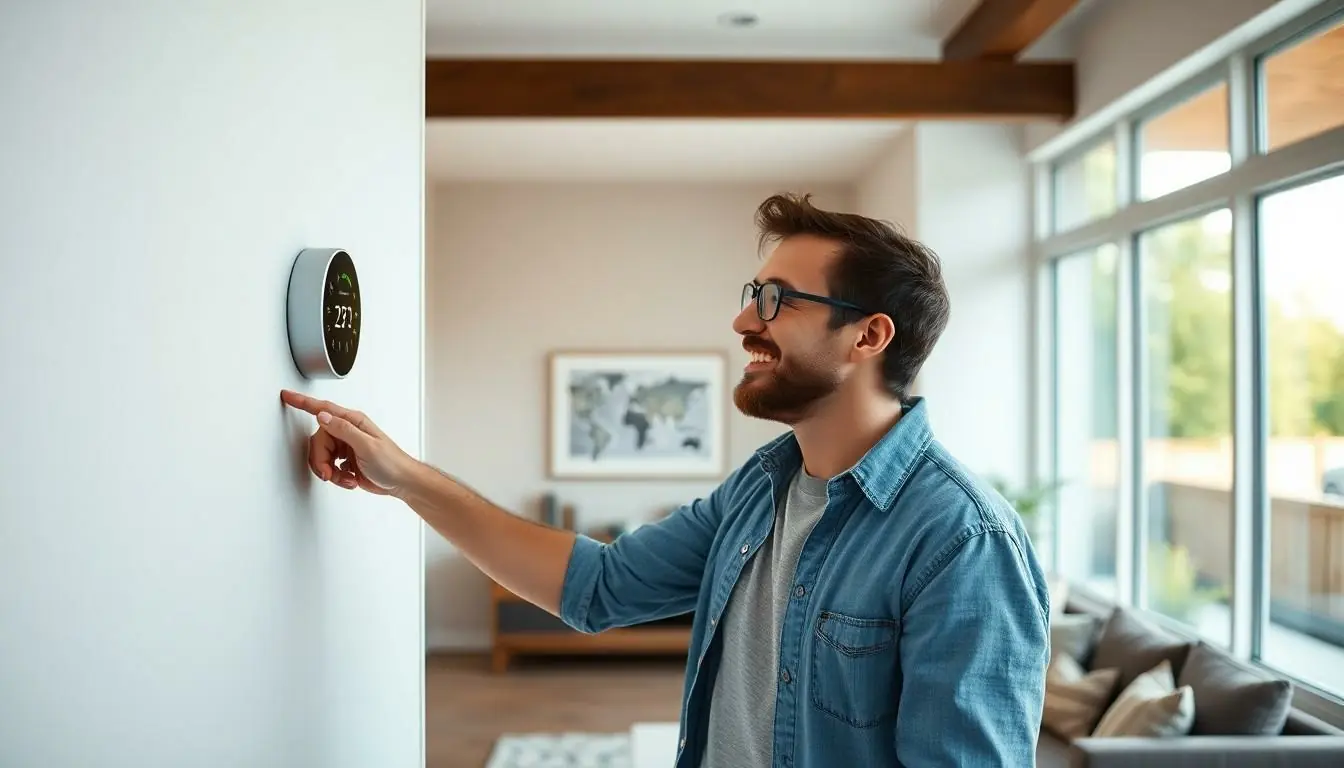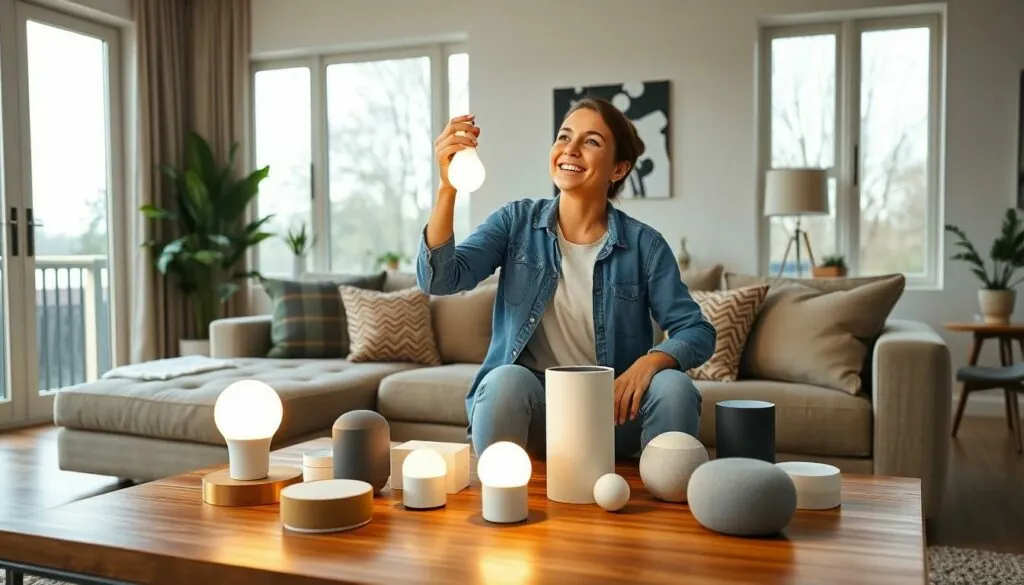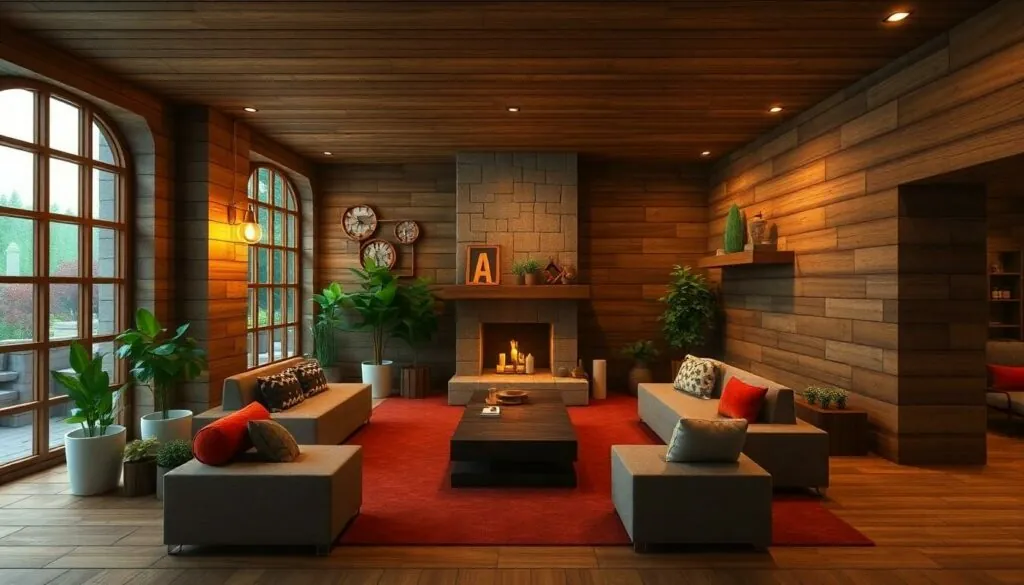Imagine walking into your home and having the lights flicker on, your favorite playlist start playing, and the thermostat adjusting to your perfect temperature—all without lifting a finger. Sounds like something out of a sci-fi movie, right? Well, with DIY home automation systems, that dream can become a reality.
Gone are the days of fumbling for switches or arguing with your thermostat. Instead, you can transform your living space into a smart haven that responds to your every whim. Whether you’re a tech wizard or just someone who struggles with the TV remote, creating your own home automation system is easier than you think. Get ready to impress your friends and maybe even make your home the envy of the neighborhood—because who wouldn’t want a house that practically runs itself?
Table of Contents
ToggleOverview of DIY Home Automation Systems
DIY home automation systems provide convenience and efficiency in modern living. These systems allow individuals to control devices through smartphones, tablets, or voice commands. Popular categories include lighting, security, and climate control systems, which enhance both comfort and safety.
Homeowners can customize DIY setups to fit specific needs. For instance, smart lighting can be programmed to adjust based on natural light levels. Security cameras offer real-time monitoring, alerting users to any unusual activity. In terms of climate control, smart thermostats can learn preferences and optimize heating and cooling schedules.
Affordability remains a key benefit of DIY systems. Many products are available at various price points, making automation accessible to a wider audience. Smart plugs provide an easy entry point, allowing users to control small appliances with minimal effort.
Installation often doesn’t require professional help. Many devices feature user-friendly guidelines, simplifying the setup process. Users can also choose from various platforms, including Zigbee, Z-Wave, or Wi-Fi, to create a cohesive smart home ecosystem.
Interconnectivity defines the effectiveness of DIY home automation. This technology enables devices from different manufacturers to work together harmoniously. Homeowners can create automated routines or “scenes” that streamline daily tasks.
Engaging with community forums enhances the DIY experience. These platforms provide valuable resources and shared experiences that can inspire new ideas. Successful implementations often gain recognition, encouraging others to experiment and innovate further.
Overall, DIY home automation systems offer an exciting opportunity for individuals to transform their spaces into smart environments. Through thoughtful planning and creativity, homeowners can enjoy the many advantages of living in a connected home.
Benefits of DIY Home Automation Systems

DIY home automation systems offer impressive benefits for homeowners looking to enhance their living space. These systems provide both functionality and a modern flair.
Cost Savings
Cost savings represent a significant advantage of DIY home automation systems. Many products exist at various price points, allowing individuals to find options that align with their budgets. Traditional home automation installations can require expensive professional services, but DIY projects often eliminate this cost. Users frequently save on energy bills by programming devices such as smart thermostats that optimize energy usage. Overall, the upfront investment in automation can lead to substantial long-term savings.
Customization and Flexibility
Customization and flexibility stand out as key features of DIY home automation systems. Homeowners can tailor their setups to meet unique preferences and lifestyles. Each device connects seamlessly through various platforms conducive to individual needs. For example, lighting can adjust automatically based on occupancy or natural light levels. DIY systems also permit users to experiment with different configurations without any large-scale remodeling. This adaptability ensures that as individuals’ needs evolve, their automation systems can shift accordingly.
Popular DIY Home Automation Components
In any DIY home automation system, key components play a vital role in functionality and user experience. Here are some essential elements homeowners often incorporate into their smart home setups.
Smart Hubs
Smart hubs serve as central control units for home automation systems. They facilitate communication among various smart devices, ensuring seamless integration. Popular options include Samsung SmartThings and Amazon Echo, both enhancing compatibility across different brands. Users appreciate the ability to manage tasks through a single interface. Connectivity options such as Wi-Fi, Zigbee, and Z-Wave enable flexibility in component selection. Custom automation routines can be created within these hubs, simplifying everyday tasks.
Sensors and Cameras
Sensors and cameras are crucial for enhancing security and monitoring home environments. Motion detectors, door/window sensors, and cameras provide real-time feedback on activity around the home. Homeowners often choose IP cameras for remote viewing via smartphone apps. Smart sensors can trigger alerts based on specific conditions, such as smoke or water detection. These devices also integrate well with smart hubs, allowing for automated responses to security breaches. Many users rely on this combination for peace of mind and enhanced safety.
Smart Lighting
Smart lighting allows homeowners to control illumination conveniently. Bulbs with Wi-Fi connectivity can change colors and brightness levels based on user preferences. Examples include Philips Hue and LIFX, which offer extensive customization options. Users can set schedules or group lights for specific areas in the home. Automation can adjust lighting according to time of day or occupancy. This feature not only enhances ambiance but also promotes energy efficiency, as lights can turn off when not in use.
Smart Thermostats
Smart thermostats optimize heating and cooling systems for energy efficiency. Popular models like Nest and Ecobee learn user habits over time, adjusting temperature settings automatically. Homeowners enjoy the ability to manage their home’s climate remotely through smartphone apps. Daily schedules can also be created to suit lifestyle patterns, reducing energy consumption. Integration with other smart home devices helps create a cohesive and energy-efficient environment. This technology contributes to lower utility bills and a more comfortable living space.
Setting Up Your DIY Home Automation System
Creating a DIY home automation system requires thoughtful planning and execution. With careful consideration, anyone can enjoy the benefits of a connected living space.
Planning Your System
Identify your needs before starting. Assess which areas of your home require automation, whether it’s lighting, security, or climate control. Prioritize your goals, such as energy efficiency or enhanced security. Research compatible devices across various platforms to ensure seamless integration. Sketch a basic layout of your system to visualize device placement and connectivity. Allocate a budget by considering both essential and optional components, as multiple price points exist for many products.
Installation Tips
Follow manufacturer instructions closely for a smooth installation process. Start with smart hub setup; this device acts as the command center for your system. Use a reliable Wi-Fi connection to facilitate communication among devices. When wiring systems, secure proper connections to avoid performance issues. Position sensors and cameras at optimal angles for effective functionality. Test each device after installation to confirm proper operation, addressing any problems immediately.
Common Mistakes to Avoid
Overlooking compatibility can lead to frustration. Ensure devices work together before purchasing, as not all are designed for seamless communication. Neglecting to consider the layout may result in connectivity issues; place devices within range of the hub. Installing devices without thorough testing can also lead to problems; confirm functionality one by one. Avoid ignoring security protocols. Keep firmware updated to protect against vulnerabilities in your system.
Future Trends in DIY Home Automation
Artificial intelligence continues to play a crucial role in the evolution of DIY home automation systems. Expect significant advancements in voice recognition technology, enhancing user experience through intuitive commands. More devices will integrate AI, allowing for smart systems that learn user behavior and preferences, ultimately optimizing energy consumption and convenience.
Home security systems will see increased sophistication, with advanced facial recognition and motion detection features. Homeowners can expect greater integration with emergency services, offering real-time alerts and security responses. Enhancements in encryption and data protection will address privacy concerns, ensuring safer environments as homes become smarter.
Sustainability will drive the design of new devices, focusing on energy efficiency and reducing carbon footprints. Many products now include adaptive energy management features, optimizing electricity usage based on real-time costs. Users will appreciate systems that provide insights into energy consumption, enabling better decision-making for reducing waste and saving money.
Interoperability among devices is set to improve, fostering an ecosystem where products from different manufacturers communicate seamlessly. This trend enhances user experience by simplifying control through single applications. New protocols will emerge, allowing diverse devices to work harmoniously, creating effortless automation routines.
Lastly, community engagement is likely to deepen as users seek shared experiences and knowledge. Online forums will help facilitate discussions around DIY projects and troubleshooting tips. Users can gain inspiration from fellow DIY enthusiasts, fostering innovation and collective growth in smart home technology.
Staying ahead of these trends ensures individuals harness the full potential of DIY home automation, turning their residences into efficient, secure, and responsive environments.
DIY home automation systems offer a unique opportunity to enhance everyday living. By embracing these technologies, individuals can create customized environments that cater to their specific needs. The ability to control various devices seamlessly not only boosts convenience but also promotes energy efficiency.
As technology continues to evolve, the potential for these systems grows. Homeowners can look forward to even more innovative solutions that prioritize security and sustainability. Engaging with communities and staying informed about emerging trends will ensure that users can make the most of their smart home experiences.
Ultimately, the journey into DIY home automation is one of creativity and empowerment, enabling individuals to transform their spaces into truly intelligent homes.





